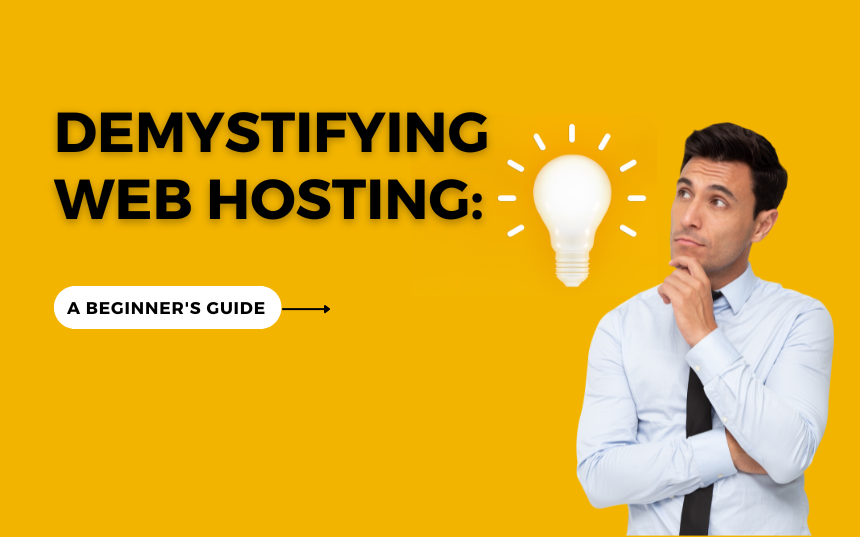
Demystifying Web Hosting: A Beginner’s Guide
Embarking on your online journey can be both exciting and overwhelming, especially when confronted with the intricacies of web hosting. For beginners, the world of domains, servers, and hosting plans may seem like an intricate puzzle. Fear not! In this comprehensive guide, we’ll demystify web hosting, breaking down the complex concepts into digestible pieces. By the end, you’ll have a clear understanding of what web hosting is and be equipped to make informed decisions for your online venture.
Understanding the Basics: What is Web Hosting?
At its core, web hosting is the service that allows individuals and organizations to make their websites accessible on the internet. When you create a website, it consists of various files, images, and code. These elements need to be stored and made available to visitors 24/7. Here’s where web hosting comes into play and why it is important to choose HosterCity Web Hosting which is the best in Nigeria
How Does Web Hosting Work?
Imagine your website as a house, and web hosting as the plot of land on which the house is built. The web host is the landlord who provides the space, ensuring your house is visible and accessible to anyone passing by. When someone types your domain into their browser, the web host serves the files, images, and content to the visitor’s browser, allowing them to view your site.
Key Components of Web Hosting
1. Domain Name
Your domain name is your website’s address (e.g., www.yourwebsite.com). It’s the name by which users will find and identify your site. You purchase a domain separately, and it’s connected to your web hosting account.
2. Server
A server is a powerful computer that stores all your website’s files, images, and data. When someone visits your site, the server retrieves and delivers the requested information to their browser. Servers can be shared (multiple websites on one server), virtual private (dedicated portion of a server), or dedicated (entire server for one website).
3. Hosting Plans
Web hosting providers offer various plans to suit different needs. Shared hosting is budget-friendly, ideal for small websites. VPS hosting provides more resources and flexibility, while dedicated hosting offers an entire server for high-traffic websites. HosterCity’s has the best web hosting plans in Nigeria.
Types of Web Hosting
1. Shared Hosting
In shared hosting, multiple websites share resources on the same server. It’s cost-effective but may lead to slower performance if one site on the server experiences high traffic.
2. VPS Hosting (Virtual Private Server)
VPS hosting offers a virtual private space on a shared server. It provides more control and resources than shared hosting, making it suitable for growing websites.
3. Dedicated Hosting
Dedicated hosting provides an entire server exclusively for your website. It’s ideal for large websites with high traffic and requires more technical expertise.
Choosing the Right Web Hosting Provider
1. Reliability and Uptime
Look for a hosting provider with a track record of reliability and high uptime (the time your website is accessible). Uptime percentages of 99.9% and above are desirable.
2. Customer Support
Opt for a provider with responsive and knowledgeable customer support. You may encounter technical issues, and having reliable support is crucial.
3. Scalability
Consider your website’s growth potential. Choose a hosting provider and plan that allows for easy scalability as your website expands.
4. Security Features
Ensure your hosting provider offers robust security features, including SSL certificates, firewalls, and regular backups, to protect your website and user data.
5. Cost and Value
While budget is a factor, focus on the value offered by the hosting provider. Compare features, performance, and customer reviews to make an informed decision.
Steps to Set Up Web Hosting
1. Choose a Domain Name
Select a unique and memorable domain name that reflects your brand or content.
2. Select a Hosting Plan
Choose a hosting plan based on your website’s size, traffic, and resource requirements.
3. Purchase Hosting and Domain
Sign up for your chosen hosting plan, and if you haven’t already, purchase your domain.
4. Install a Content Management System (CMS)
Popular CMS options like WordPress, Joomla, or Drupal simplify website creation and management. Install your chosen CMS.
5. Design Your Website
Customize your website using themes and templates provided by your CMS or hire a web designer for a personalized touch.
6. Publish Your Content
Add your content, images, and other elements to make your website live.
Common Challenges and Solutions
1. Slow Loading Times
Optimize images, use caching plugins, and consider upgrading to a higher-tier hosting plan for better performance.
2. Security Concerns
Regularly update your CMS and plugins, use strong passwords, and implement security features provided by your hosting provider.
3. Limited Resources
If your website outgrows its current plan, consider upgrading to a higher-tier plan or switching to a more robust hosting solution.
Conclusion
Congratulations! You’ve successfully navigated the world of web hosting. Armed with this knowledge, you can confidently choose the right hosting provider, set up your website, and troubleshoot common challenges. Remember, web hosting is the foundation of your online presence, and with the right host, your website can thrive and captivate audiences worldwide. Happy hosting!

